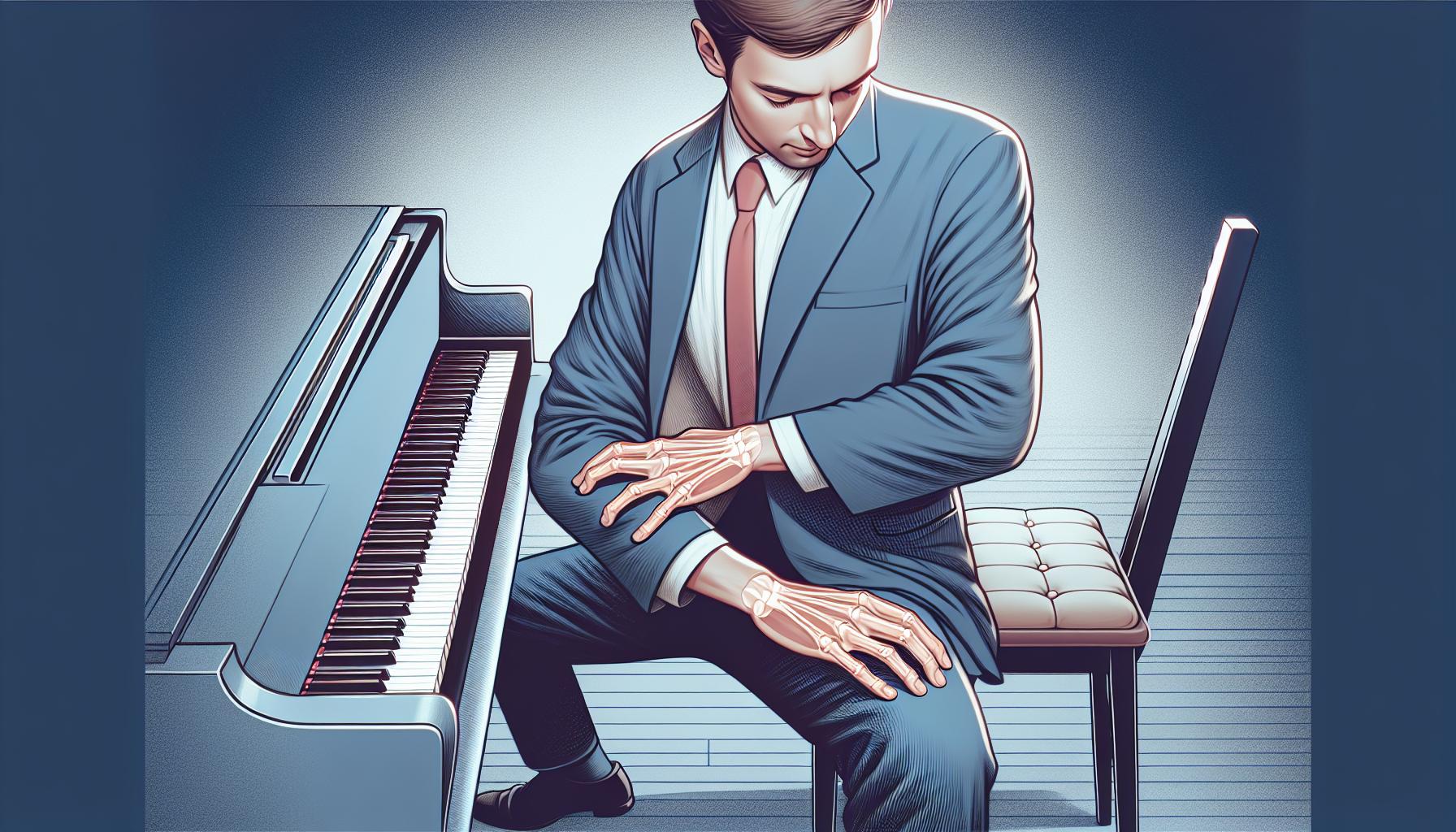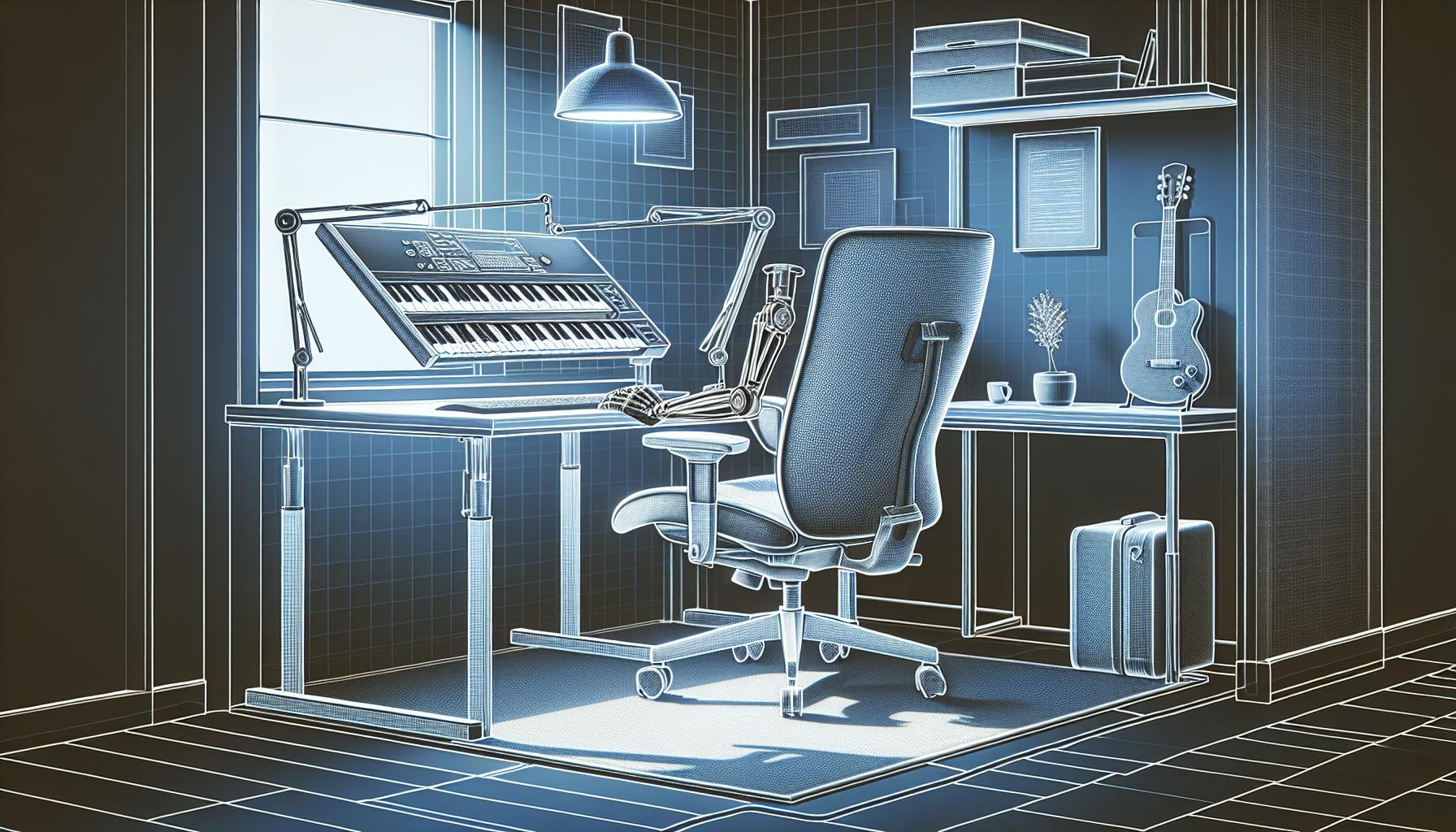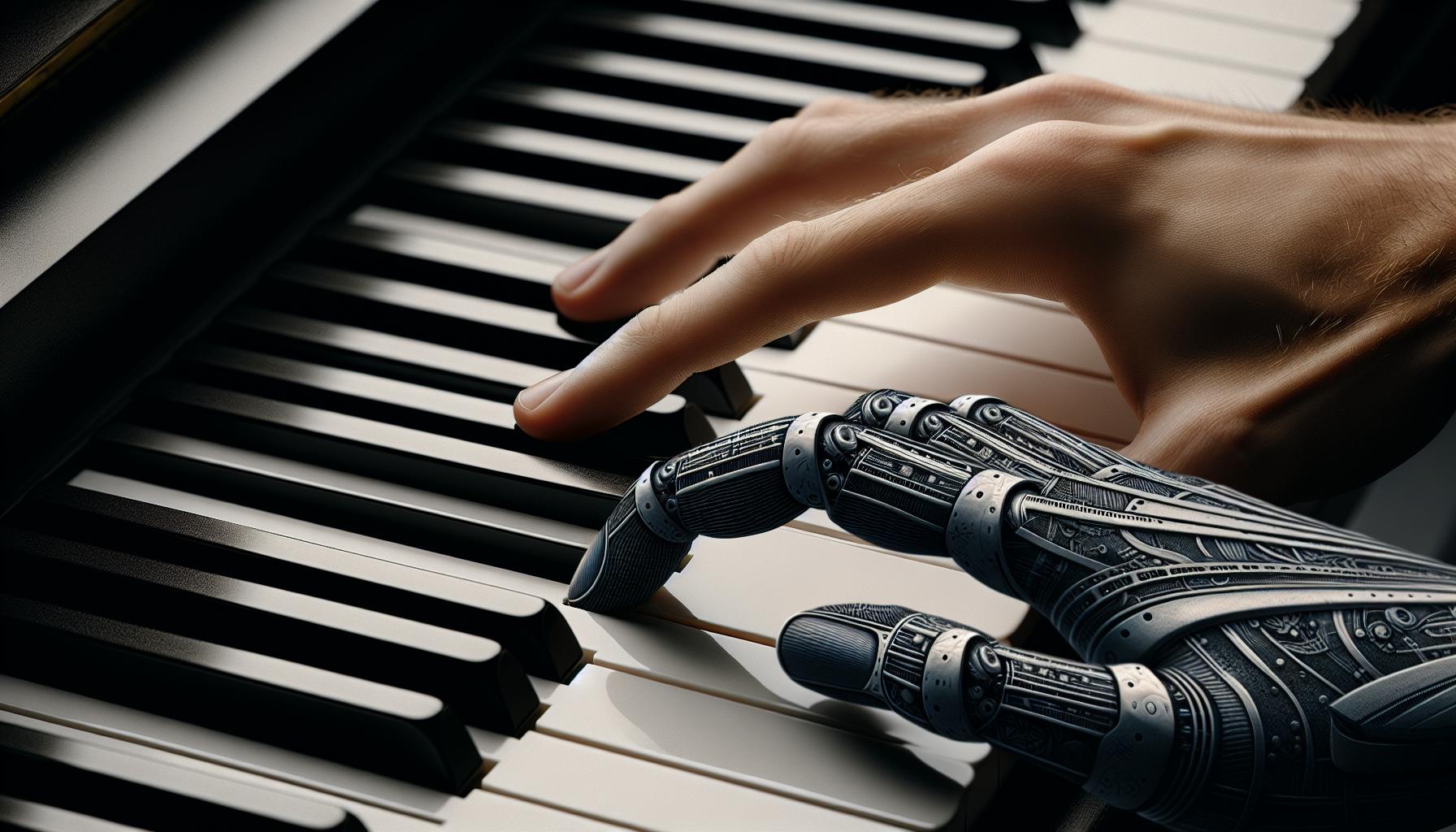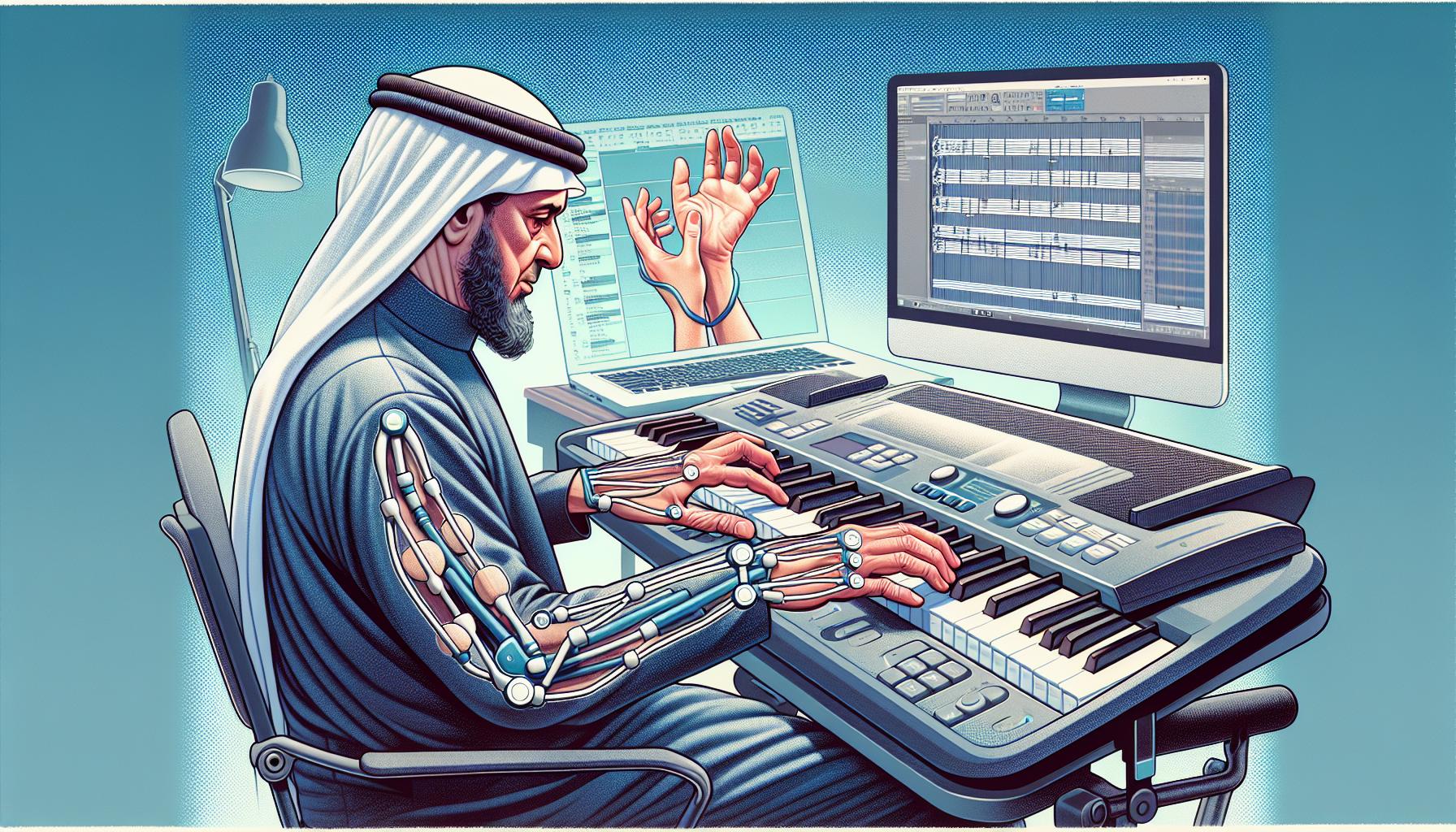Playing the keyboard with arthritis might seem like a daunting challenge at first glance. The thought of pressing down keys when your fingers are stiff and sore could be discouraging. But here's a little secret: it's definitely possible, and many have found joy and relief in the melodies they create despite their condition.
Adapting your keyboard playing technique and making some ergonomic adjustments can make a world of difference. It's all about finding the right balance between comfort and musical expression. So, if you love tickling the ivories but arthritis is trying to hold you back, don't worry. You're about to discover how to keep those fingers moving smoothly across the keys, making music that soothes the soul and the joints.
Understanding Arthritis and Its Effects on Keyboard Playing
Arthritis is a common condition that affects millions of people worldwide, characterized by inflammation of the joints. This inflammation can lead to pain, stiffness, and reduced mobility, which can significantly impact a person's ability to perform daily activities, including playing musical instruments like the keyboard.
For musicians dealing with arthritis, the physical act of pressing down on the keyboard keys can be challenging. The stiffness in the fingers makes it harder to move swiftly and accurately across the keyboard, while the pain can make prolonged sessions of playing quite uncomfortable. However, it's not all gloom and doom for keyboard enthusiasts. Understanding the specific ways in which arthritis affects playing can lead to finding effective strategies to mitigate these challenges.
Key Points on Arthritis and Keyboard Playing:
- Stiffness and Swelling: The fingers and wrists can become stiff and swollen, making it difficult to move quickly or press down on keys with the necessary force.
- Pain: Pain, often a constant companion of arthritis, can range from mild to severe and may escalate during or after playing the keyboard.
- Reduced Mobility: The range of motion in the fingers and hands may be limited, affecting the ability to stretch across keys or perform complex chord progressions.
To navigate these challenges, it's essential for individuals with arthritis to first consult with healthcare professionals who can provide tailored advice and treatment plans. This may include physical therapy, medication, or other interventions aimed at reducing symptoms.
Moreover, incorporating specific adjustments in the approach to playing the keyboard can make a significant difference. Selecting a keyboard with lighter, more responsive keys can reduce the amount of force needed to play. Additionally, warming up with gentle hand and finger exercises before playing can help increase flexibility and reduce stiffness.
- Shorter Playing Sessions: Limiting the duration of playing sessions can help manage fatigue and discomfort.
- Ergonomic Adjustments: Using supports like wrist rests or adjusting the keyboard stand for optimal height and angle can promote a more comfortable playing posture.
- Simplified Arrangements: Playing simpler musical pieces or adapting arrangements to avoid stretches and fast movements can keep the joy of music alive without straining the joints.
Adapting Your Playing Technique

When arthritis strikes, it's not just the physical aspect of playing the keyboard that's affected; the technique must adapt as well. For many, this transition can be challenging yet rewarding, as it opens up new avenues for musical expression. Adapting one's playing technique to accommodate arthritis involves a combination of modifications to posture, finger positioning, and playing style.
Firstly, posture plays a critical role in reducing strain on the joints. Ergonomic seating and keyboard placement can ensure the hands and arms are in the most relaxed position possible. Adjusting the height of the piano bench so the forearms are parallel to the keyboard can help minimize stress on the fingers and wrists. Moreover, maintaining a slight curve in the fingers, as opposed to stretching or flattening them, allows for gentler, more fluid movements across the keys.
Dynamic playing also needs adaptation. Those with arthritis should focus on using the weight of their arms to press the keys instead of relying solely on finger strength. This technique, known as arm weight playing, can significantly reduce the force exerted by the fingers, thus alleviating pain. Emphasizing this approach during softer passages and when accurate key depression is essential can make a world of difference.
In addition to these physical adjustments, some creative adaptations can be made to the music itself. Simplifying complex melodies or harmonies helps in reducing the number of finger movements required. When looking at sheet music, identifying passages that can be played with fewer notes or simpler chords without losing the essence of the piece can be incredibly beneficial. For more advanced players, re-arranging music to fit their comfort level not only maintains their connection to the piece but also fosters a deeper understanding and appreciation of the work.
Here are a few technical adjustments to consider:
- Light Touch: Opt for a lighter touch when possible, reducing the pressure on painful joints.
- Shorter Sessions: Limit playing sessions to prevent overuse of joints, incorporating frequent breaks.
- Warm-Up Exercises: Begin each session with gentle hand and finger exercises to enhance flexibility.
- Mindful Repertoire Selection: Choose pieces that are within comfortable technical demand or adapt arrangements accordingly.
Making Ergonomic Adjustments to Your Setup

Adapting the physical setup of the keyboard can significantly reduce strain on the hands and wrists of individuals with arthritis. Key adjustments include the height and angle of both the keyboard and the chair. Achieving an optimal setup requires a balance that supports good posture while minimizing stress on the joints.
Chair Height and Position
Selecting the right chair plays a pivotal role in maintaining comfort during play. It's essential that the chair allows the player's feet to rest flat on the ground, with knees at a 90-degree angle. This position provides stability and reduces undue pressure on the joints. Furthermore, opting for a chair with adjustable height and sufficient back support can make a considerable difference in overall comfort and endurance during longer sessions.
Keyboard Height and Angle
The height of the keyboard should be adjusted so that the forearms are parallel to the floor, or slightly sloping downward, without forcing the wrists to bend upwards or downwards. This reduces the risk of straining the wrist and finger joints. If possible, using a keyboard stand that allows for angle adjustments can further tailor the setup to an individual's needs, enhancing comfort and playability.
Key Modifications
- Adjustable Stands: Invest in stands that offer easy height and angle adjustments.
- Cushioned Bench: A bench with padding can reduce pressure on the hips and spine.
- Wrist Supports: Soft foam or gel wrist rests can alleviate pressure and provide support during playing.
- Foot Pedal Extensions: For those who find reaching foot pedals difficult, extensions or adjustable pedals ensure they can be used without strain.
Environmental Considerations
The environment where the keyboard is set up also influences playing comfort. Proper lighting reduces eye strain and the need for excessive reaching or leaning to see the music sheet or keys. Ensuring the room temperature is comfortable and avoiding drafty or overly warm areas can help in managing arthritis symptoms during playing.
In integrating these ergonomic adjustments, individuals will find that playing the keyboard not only becomes more comfortable but also more enjoyable. Each modification, no matter how small it seems, contributes to a setup that accommodates their needs. These changes go hand in hand with the technique adaptations discussed previously, forming a comprehensive approach to playing the keyboard with arthritis.
Exercises to Improve Finger Dexterity and Reduce Stiffness

For those managing arthritis while pursuing their passion for playing the keyboard, incorporating specific exercises into their routine can lead to significant improvements in finger dexterity and a reduction in stiffness. These targeted exercises are designed not only to enhance playing ability but also to support overall hand health. Here's a look at some effective exercises they can start with.
Warm-Up Stretches are vital before diving into keyboard sessions or finger exercises. Gently stretching the fingers, wrists, and arms helps to prepare the muscles and joints, reducing the risk of strain. Simple stretches include wrist flexes and extensions, where one extends the arm with the palm down and uses the other hand to gently pull the fingers back, then down, holding each position for about 15 seconds.
The Piano Method exercise utilizes the keyboard itself for improving finger strength and flexibility. One can practice pressing the keys gently but firmly, focusing on using each finger individually. This can be done by playing scales or simple songs, concentrating on smooth transitions and even pressure from each finger. It's not just about playing music; it's about engaging the fingers in a controlled, mindful manner.
Finger Opposition Exercises, involving touching each finger to the thumb in succession, can significantly enhance finger control and dexterity. Repeating this exercise several times throughout the day helps keep the fingers mobile and reduces stiffness. For added resistance and to build strength, small rubber bands can be placed around the thumb and the opposing finger during this exercise.
Squeeze and Release Practices aid in building endurance and flexibility. Using a soft stress ball or similar object, they can squeeze tightly for a few seconds and then release. This exercise is not only great for strength but also encourages joint movement without the high impact of other activities.
Dexterity Challenges such as picking up small items, such as beads or coins, and sorting them into containers can be fun and therapeutic. It requires precise movements and fine motor control, challenging the fingers in various ways and improving their ability to perform complex tasks.
Finding Joy and Relief in Playing Despite Arthritis

For many individuals living with arthritis, the idea of playing a keyboard can feel daunting. The pain and stiffness associated with arthritis might seem like insurmountable barriers. However, with the right approach, playing the keyboard can not only become a possible hobby but also a source of joy and relief from the symptoms of arthritis.
Adapting the playing environment and keyboard itself to one's physical needs is the first step in making keyboard playing enjoyable. For instance, ergonomic adjustments to the keyboard setup, which were discussed earlier, are essential. They're not just about comfort; they're about making music accessible. Choosing a keyboard with lighter action or touch-sensitive keys can make playing less physically demanding for arthritic hands.
In addition to physical adjustments, embracing a positive mindset plays a crucial role. Seeing the activity not as a challenge but as an opportunity can make a significant difference. It's about focusing on what can be done rather than what can't. Celebrating small victories, like mastering a new chord or piece, can provide a significant morale boost.
Engaging in regular, gentle exercises designed for musicians with arthritis is another vital strategy. These exercises, detailed previously, don't only improve playing capability but also contribute to overall hand health. Participants often report feeling less stiffness and pain, which directly translates to a more enjoyable playing experience.
Many find that music itself offers therapeutic benefits. The joy of creating music can provide a mental escape from chronic pain, serving as an excellent coping mechanism. For some, this mental engagement and the sense of accomplishment from making music can even lead to a noticeable reduction in perceived pain levels.
Furthermore, joining a community of musicians or learners can enhance the playing experience. Sharing progress, challenges, and tips with others who understand the unique difficulties of playing with arthritis can be incredibly uplifting. Online forums, local music groups, or classes tailored to individuals with disabilities offer valuable support networks.
Technology also offers several tools and applications designed to aid musicians with arthritis. Software that helps with composing, arranging, and even virtual playing can keep the passion for music alive without the physical strain. These digital solutions allow individuals to continue exploring musical creativity, even on days when playing physically might not be possible.
Conclusion
Playing the keyboard with arthritis might seem challenging at first but it's far from impossible. By embracing the strategies outlined—like ergonomic adjustments, lighter action keys, and gentle exercises—players will find themselves making music that's as beautiful and fulfilling as ever. Remember, it's not just about the notes you hit but the joy and therapeutic benefits that come from the journey. Let's keep the music flowing, celebrate every achievement, and never forget the power of a supportive community and the right tools to turn obstacles into opportunities for growth and enjoyment.
Harlan Kilstein began playing piano during covid with no piano background at all. He taught himself how to play learning what to do and what not to do.
Today he's an advanced intermediate player and can help you grow in your skills because he learned all this on his own.






